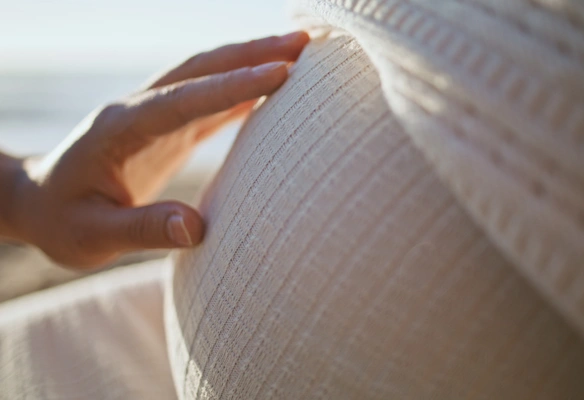Yes. Platelet-rich growth factors for the endometrium are a safe complement that can be applied alongside IVF, ICSI, or frozen and fresh embryo transfers. Its use is indicated to boost embryo implantation and improve results in cases of thin endometrium or previous failures.
Platelet-rich growth factors (PRGF) in assisted reproduction
A regenerative technique to improve endometrial receptivity
At Fertility Madrid, we use platelet-rich growth factors (PRGF), also known as platelet-rich plasma (PRP), to improve endometrial receptivity and increase your chances of pregnancy. A safe, simple, and natural technique, ideal for cases of thin endometrium or implantation failures.
When is the use of PRGF recommended in assisted reproduction?
This technique is applied in specific cases such as:
- Thin or refractory endometrium (with difficulty thickening properly).
- Previous implantation failures in IVF treatments or frozen embryo transfers.
- Low endometrial receptivity.
- Women with low ovarian reserve or undergoing egg donation treatments.
- Patients seeking natural alternatives to improve their fertility.
Benefits of PRGF in fertility
- Increases endometrial thickness, improving its conditions to host the embryo.
- Stimulates cell regeneration and uterine vascularisation.
- Increases implantation and clinical pregnancy rates.
- Improves endometrial receptivity without the need for additional medication.
- Outpatient, painless, and 100% safe technique.

What is the PRGF procedure step by step?
Blood extraction
A blood sample is taken from the patient.
Centrifugation
In the laboratory, the platelets are separated to obtain the platelet-rich plasma with growth factors.
Biological activation
Active proteins are obtained that stimulate cell regeneration (such as VEGF, FGF, PDGF, TGF-B, IGF-I, etc.).
Intrauterine inoculation
PRGF is administered directly into the uterus using a thin cannula, in the consultation room, without pain.
Repetition of the process
Normally, 2 or 3 applications are carried out, spaced 48–72 hours apart.
Frequently asked questions about PRGF in fertility
Does the application of PRGF hurt?
No. It is a quick and completely painless procedure, carried out in the consultation room without the need for anaesthesia.
How many applications are needed?
Normally between 2 and 3 applications are carried out, depending on the response of the endometrium.
Is it compatible with IVF or other treatments?
Yes. It can be applied in IVF cycles, egg donation, frozen embryos, etc.
What risks does PRGF in fertility carry?
The risks are minimal, since PRGF is obtained from the patient’s own blood (autologous procedure). Slight vaginal bleeding or temporary discomfort may appear after application, which disappears within a few hours. It does not interfere with medication or embryo quality.
How many PRGF applications in fertility are needed to improve the endometrium?
In most cases, one or two applications of platelet-rich growth factors are performed per cycle. The exact number is determined by the specialist depending on endometrial thickness and treatment response, with the aim of optimising uterine receptivity and increasing the chances of pregnancy.